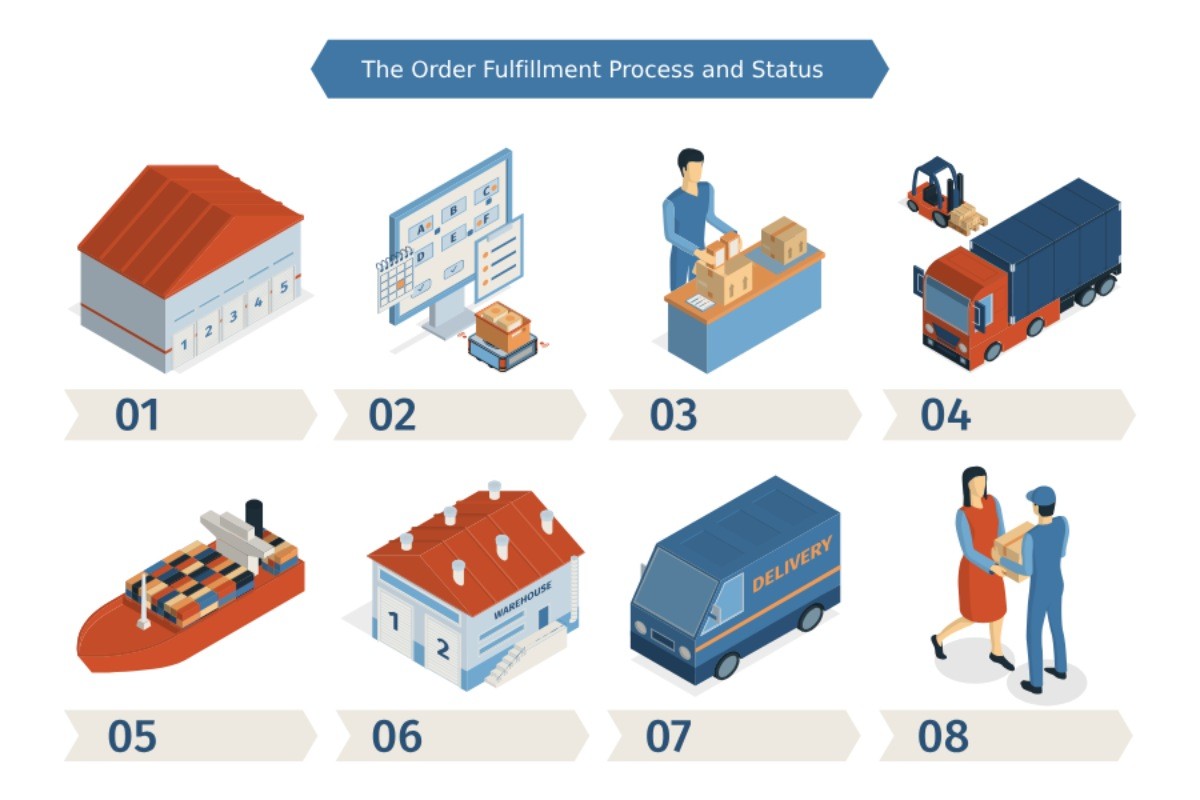The achievement of any E-commerce order fulfillment depends on the order fulfillment strategies used for delivering items to customers. It is consequently essential to understand the best methods that work for your commercial enterprise to ensure the happiness of your customers.
This blog will help you understand the order achievement procedure and special processes to use to ensure the successful delivery of goods for your clients.
Understanding Order Fulfillment
Let’s first discuss the common questions asked in the order fulfillment process to help you have a deeper understanding of it.
What is Order Fulfillment?
Order fulfillment is the procedure of packing client orders and transporting them to their required location plus the additional approaches that are involved in having the task completed. Order fulfillment is a critical part of E-commerce fulfillment operations because it ensures customers’ trust and loyalty.
What Does Fulfillment Status Mean?
Fulfillment status is the stage where your fulfillment order is currently in. It gives you a deeper understanding of the stage of your delivery which can be received, processed, picked, or packed. This helps you track your delivery progress and estimate when it will reach you.
What Does Processed Order Mean?
This is where an order is received and packed for shipment to its specified customer. Some businesses have software that notifies the customers of each step their product is in to ensure transparent tracking. This means that all the necessary checks like verification and inventory availability have been completed and the order can move to the next step of the fulfillment process.
The Order Fulfillment Process and Status
The order fulfillment process can be broken down into the following steps:
1. Receiving
Receiving is the first step where the products are received from the suppliers and verified to make sure they are in the right order.
2. Storage
Depending on the demand forecasts, the products are stored for short or long storage.
3. Processing
In this stage, the customer orders are verified, picked, and packed. The order processing can be done by using order management software with the E-Commerce website shopping cart.
4. Picking
The picking staff chooses the specified order from the warehouse based on the details on the packing slip. This includes ensuring the colors, sizes, and unit numbers match the product being picked.
5. Packing
The packing team or automated robots pack the products considering the sizes and fragility of the products. The dimensional weight is calculated to determine the shipping costs.
6. Shipping and Delivery
Once the products are packed, the orders are taken for shipping to the customers.
7. Returns
The fulfillment company must handle the returned products with care in case they are returned by the customer.
Effective Order Fulfillment Strategies for E-commerce Success
The following are some of the order fulfillment strategies for e-commerce success.
Direct to Consumer (DTC)
The services of middlemen or third-party retailers are not used in this case thus building a strong relationship between businesses and their customers. The direct-to-consumer is usually done online however the fulfillment order businesses can also have physical locations where their transactions can take place.
Dropshipping
Dropshipping is where businesses use third parties to source, store, and ship the products to the customers. This tactic reduces storage costs and risks connected with excess storage. The businesses act as go-between customers and suppliers without the task of doing the inventory themselves. This is the best option for businesses looking to scale and enter new markets faster.
In-house Fulfillment
In-house fulfillment allows businesses to handle all the order fulfillment themselves. This involves packaging and shipping which tends to be less costly for businesses. The fulfillment company has full control over the fulfillment order thus ensuring quality services and fast response to customers. Although it ensures full control of the fulfillment order, businesses need to invest in warehouse equipment and technology for seamless operations and efficiency.
Outsourced Fulfillment (3PL)
Outsourced fulfillment is the process by which businesses work with other third-party logistics companies to fulfill orders. This includes numerous responsibilities such as inventory storage, shipping, and packing. By adopting outsourced fulfillment, businesses that process orders for online merchants can concentrate on other projects like marketing and the creation of new products.
Cross-Docking
Cross-docking reduces the requirement for long-term warehouse storage of items, hence lowering storage costs. The received goods are sorted at the cross-docking center and loaded directly for shipment. This ensures efficiency and customer satisfaction as the goods are delivered in a short amount of time.
Conclusion
Not every fulfillment tactic or strategy fits every business. It is important to research the best strategies suited for your business to increase efficiency and customer satisfaction. From in-house, direct-to-consumer, drop shipping, and cross-docking, all these strategies are important to elevating your business.




